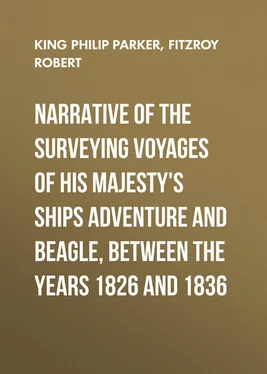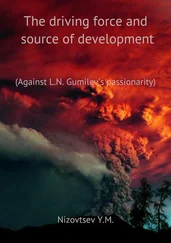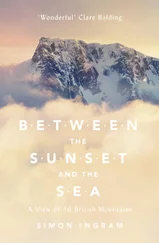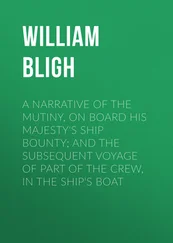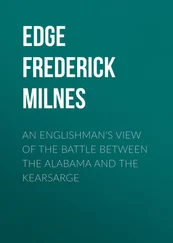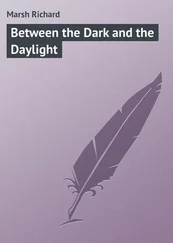Robert Fitzroy - Narrative of the surveying voyages of His Majesty's ships Adventure and Beagle, between the years 1826 and 1836
Здесь есть возможность читать онлайн «Robert Fitzroy - Narrative of the surveying voyages of His Majesty's ships Adventure and Beagle, between the years 1826 and 1836» — ознакомительный отрывок электронной книги совершенно бесплатно, а после прочтения отрывка купить полную версию. В некоторых случаях можно слушать аудио, скачать через торрент в формате fb2 и присутствует краткое содержание. Издательство: Иностранный паблик, Жанр: foreign_antique, foreign_prose, на английском языке. Описание произведения, (предисловие) а так же отзывы посетителей доступны на портале библиотеки ЛибКат.
- Название:Narrative of the surveying voyages of His Majesty's ships Adventure and Beagle, between the years 1826 and 1836
- Автор:
- Издательство:Иностранный паблик
- Жанр:
- Год:неизвестен
- ISBN:нет данных
- Рейтинг книги:3 / 5. Голосов: 1
-
Избранное:Добавить в избранное
- Отзывы:
-
Ваша оценка:
- 60
- 1
- 2
- 3
- 4
- 5
Narrative of the surveying voyages of His Majesty's ships Adventure and Beagle, between the years 1826 and 1836: краткое содержание, описание и аннотация
Предлагаем к чтению аннотацию, описание, краткое содержание или предисловие (зависит от того, что написал сам автор книги «Narrative of the surveying voyages of His Majesty's ships Adventure and Beagle, between the years 1826 and 1836»). Если вы не нашли необходимую информацию о книге — напишите в комментариях, мы постараемся отыскать её.
Narrative of the surveying voyages of His Majesty's ships Adventure and Beagle, between the years 1826 and 1836 — читать онлайн ознакомительный отрывок
Ниже представлен текст книги, разбитый по страницам. Система сохранения места последней прочитанной страницы, позволяет с удобством читать онлайн бесплатно книгу «Narrative of the surveying voyages of His Majesty's ships Adventure and Beagle, between the years 1826 and 1836», без необходимости каждый раз заново искать на чём Вы остановились. Поставьте закладку, и сможете в любой момент перейти на страницу, на которой закончили чтение.
Интервал:
Закладка:
The Beagle left the Gallegos on the 23d, and reached Port Famine on the 28th, a very short passage, since she remained for a night and the greater part of a day at Gregory Bay, to communicate with the natives. When approaching the First Narrow, Captain Stokes observed a brig, apparently at anchor, under Cape Orange, and supposing her either to have found a good anchorage, or to be in distress, steered towards her. Before he had reached within two miles of her, the Beagle touched the ground, but was extricated from the danger most fortunately, because it was nearly high water; and had she remained a-ground during the tide, the consequences might have been serious – at least, she could not have been got off without lightening her considerably. The brig proved to be the Adeona (Mr. Low's vessel), on her way to meet the Uxbridge. In attempting to enter the narrow, she grounded on the shoals, and had been left dry. The following tide again floated her, and she was on the point of getting underweigh, when the Beagle hove in sight. Captain Stokes finding that the Adeona had received no damage, proceeded to Gregory Bay.
By the Beagle's arrival we were informed of the death of Lieutenant Robert H. Sholl, after an illness of ten days. His remains were interred at Port San Julian, where a tablet was erected to his memory.
This excellent young man's death was sincerely regretted by all his friends, and by none more than by me. He was appointed to the expedition, as a midshipman, solely on account of his high character.
During our voyage from England, he made himself conspicuously useful in saving the cargo of a vessel, which was stranded in Port Praya; and on our arrival at Rio de Janeiro, the Commander-in-chief appointed him to a vacant lieutenantcy on board the Beagle: an appointment which, up to the period of his lamented death, he filled zealously and most creditably. 96 96 I cannot avoid noticing here the considerate conduct of the Commander-in-chief (Sir George Eyre) with respect to this appointment. By the tenor of my instructions the Adventure and Beagle were placed under the Admiral's orders; and the vacancy, had he wished to exercise his prerogative, might have been filled by one of his own followers. It was, however, given, at my request, to Mr. Sholl, as being more conversant with the duties of this peculiar service than any of the midshipmen of the flag-ship. The Admiral's conduct, on this occasion, calls for my warmest thanks.
On the 1st of March we were surprised by the appearance of three Europeans, walking round Point St. Anna. A boat was sent for them, and we found they were deserters from the Uxbridge, who had come to volunteer for our ships.
The following day the Adeona and Uxbridge arrived, on their way to Port San Antonio, to boil their oil; but I recommended Bougainville, or (as the sealers call it) Jack's Harbour, as more convenient for their purpose, and more secure from storms, as well as from troublesome visits of the natives.
Upon my offering to restore the three deserters to the Uxbridge, Mr. Low requested me to keep them, and another, also, who was anxious to join the Adventure, to which I consented, as the Adelaide wanted men.
A few days after Mr. Low's departure, he returned in a whale-boat to ask assistance in repairing the Uxbridge's rudder. By our help it was soon made serviceable, and she was enabled to prosecute her voyage, which could not otherwise have been continued.
The Adelaide being ready for sea: her first service was to be an examination of the St. Sebastian Channel, which, from its delineation on the old charts, would seem to penetrate through the large eastern island of Tierra del Fuego. In the voyage of the Nodales (in the year 1618), an opening on the eastern coast, supposed to be the mouth of a channel, communicating with the Strait of Magalhaens, was discovered. After describing the coast to the south of Cape Espiritu Santo, the journal of that voyage states: "We found, in the channel of St. Sebastian, twenty fathoms clear ground. The north shore is a beach of white sand, five leagues in extent, stretching out from the high land that terminates at Cape Espiritu Santo, and giving the coast here the appearance of a deep bay; but, on a nearer approach, a projecting tract of low shore is observed. The south extremity of this low beach is a sandy point, round which the channel trends; the mouth is a league and a half wide. The south shore is higher than the land to the northward, and in the middle of the bay the depth is from fifteen to twenty fathoms clear ground, and a good bottom; but from mid-channel to the south shore the bottom is stony, and the water, of little depth, there being only six and seven fathoms. From hence the channel shows itself, and continues, as far as we could see, of the same breadth. It seemed to be a large sea. The latitude was observed to be 53° 16′." 97 97 Relacion del Viage, &c. que hicieron los Capitanes B. G. de Nodales y Gonzalo de Nodales, p. 59.
From the above account, and from the chart that accompanies it, in which this inlet is made to communicate with the Strait of Magalhaens by the opening round Cape Monmouth, our knowledge of the supposed St. Sebastian Channel was derived. That there is a deep bay, in the latitude of 53° 16′, not only appears from the account of the Nodales, who were within the heads, although it seems they did not proceed beyond the stony ground on the south side of the entrance; but also from the accounts of vessels who have lately seen it; and of one ship-master who was deterred from entering, by the formidable notice on our charts of its being "only navigable for small vessels," whence he conjectured that the tides would be very strong, and the channel occasionally narrow, as well as narrow, and shoal.
Sarmiento, Narborough, Byron, Wallis, Bougainville, and Cordova, have severally noticed an opening, which corresponds to this supposed channel, namely, that between Capes Monmouth and Valentyn; but the object of those voyagers having been to make the passage through the known Strait, to explore this opening was, in all probability, considered a waste of time; yet, that such a channel was supposed to exist, we must conclude from the conspicuous figure it makes in the charts of Tierra del Fuego.
Had there been a knowledge of its affording any communication with the sea, surely Sarmiento and Narborough, as well as the Nodales, who navigated the Strait from west to east, would have been induced to attempt to pass through; and avoid the dangers, as well as difficulties, of the channels to the northward.
Anxious to set the question at rest, I gave Captain Stokes orders to proceed to survey the western coasts, between the Strait of Magalhaens and latitude 47° south, or as much of those dangerous and exposed shores as he could examine, with the means at his disposal, and sailed myself, in the Adelaide, to explore the supposed St. Sebastian Channel. Every discretionary power was given to Captain Stokes to act as he pleased, for the benefit of the service; but he had strict orders to return to Port Famine by the 24th of July, when I hoped to move the Adventure to some other part of the Strait, and to recommence operations with the earliest days of spring, if the winter should be unfit for our work.
Having crossed over to the southward of Point Boqueron, we proceeded, on the 13th of March, to the N.E. (in which direction the opening trended), at no great distance from the northern shore; behind which the country seemed to rise gradually to the summit of a long ridge of table-land, terminating near the First Narrow, and appearing like that in the neighbourhood of Cape Gregory. It was inhabited; for here and there we observed the smoke of fires, perhaps intended as invitations for us to land.
The south side of the opening seemed (after forming a small bay under Nose Peak) to extend in a direction parallel to the northern coast of the bay, for three or four leagues, when it dipped beneath the horizon. Neither shore had any opening or indenture in its coast line, of sufficient size to shelter even a boat; so that a vessel caught here, with a south-westerly gale, would have little chance of escape; unless a channel should exist, of which, from the stillness of the water and the total absence of tide, we had very little hope. The soundings were variable between twenty and thirty fathoms, and the bottom seemed to be of shells, probably covering a substratum of clay or sand. As we stood on, a small rocky lump came in sight, which appeared to be the termination of the northern shore, and again we flattered ourselves with the expectation of finding a passage; but in less than half an hour afterwards, the bay was distinctly seen to be closed by low land, and the rocky lump proved to be an isolated mass of rock, about two miles inland. As every person on board was then satisfied of the non-existence of any channel, we put about to return, and by bearings of Mount Tarn, crossed by angles from Mount Graves, Nose Peak, and Point Boqueron, our position, and the extent of this bay, were determined. As it affords neither anchorage nor shelter, nor any other advantage for the navigator, we have named it Useless Bay. It was too much exposed to the prevailing winds to allow of our landing to examine the country, and its productions, or to communicate with the Indians; and as there was not much likelihood of finding anything of novel character, we lost no time in retreating from so exposed a place. Abreast of Point Boqueron the patent log gave for our run twenty-six miles, precisely the same distance which it had given in the morning; so that from five o'clock in the morning until ten, and from ten o'clock until four in the afternoon, we had not experienced the least tide, which of itself is a fact confirmatory of the non-existence of a channel.
Читать дальшеИнтервал:
Закладка:
Похожие книги на «Narrative of the surveying voyages of His Majesty's ships Adventure and Beagle, between the years 1826 and 1836»
Представляем Вашему вниманию похожие книги на «Narrative of the surveying voyages of His Majesty's ships Adventure and Beagle, between the years 1826 and 1836» списком для выбора. Мы отобрали схожую по названию и смыслу литературу в надежде предоставить читателям больше вариантов отыскать новые, интересные, ещё непрочитанные произведения.
Обсуждение, отзывы о книге «Narrative of the surveying voyages of His Majesty's ships Adventure and Beagle, between the years 1826 and 1836» и просто собственные мнения читателей. Оставьте ваши комментарии, напишите, что Вы думаете о произведении, его смысле или главных героях. Укажите что конкретно понравилось, а что нет, и почему Вы так считаете.
